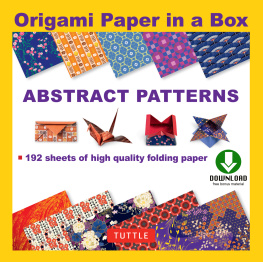ABOUT THE AUTHOR
Michael G. LaFosse is best known as a paper folding artist, one of the few who also makes his own, handmade papers. He has enjoyed the art of Origami since 1962, and has been teaching paperfolding and papermaking since 1972. LaFosse's most popular works in handmade paper are of natural history subjectsin college, he studied biology, as well as math and art. His work is shown in national and international museums and galleries; including the Peabody Essex Museum, Salem Massachusetts; the Arizona Sonora Museum in Tucson, Arizona; the Carousel du Louvre, in Paris; and toured five major cities in Japan with Master Akira Yoshizawa's life retrospective origami exhibit.
Michael created a spectacular show of original origami natural history sculptures after an internship at the Arizona-Sonora Desert Museum, Tucson. Over 40,000 people viewed his works on display at their Ironwoods Gallery. In 2004 he studied plants and animals of the Florida Everglades, in preparation for the 2005 exhibit "FLorigami", at the Morikami Japanese Museum and Gardens, Del Ray Beach, Florida. Some of the more unusual origami applications that have employed LaFosse's talent include elaborately folded pastry and hors d'oeuvres, and custom folded plastic components for clean rooms and earth orbiting satellites.
Michael G. LaFosse and Richard L. Alexander co-founded the Origamido Studio in 1996, a commercial design studio, an origami classroom, a hand papermaking facility, and a gallery displaying exquisite origami and paper arts from over 60 artists. Together, they have written over two dozen books and have produced over a dozen instructional videos (now DVD) on origami and hand papermaking. They consult to engineers, teachers and artists, and design props for TV, print, web-based, and tangible advertising.
Origamido Studio's commercial clients include: Saks Fifth Avenue, Hermes, United Nations' UNICEF, Lotus Development, Columbo Yogurt, Reebok-Rockport Shoes, Pfizer Pharmaceuticals, Union Camp Paper (IP), McDonald's Restaurants, NASA, QVC, Talbot's, ToySmart, Fidelity Capital, General Motors, and several publishing companies.
ABOUT PAPER
Creating origami art takes more than perfecting folding techniques; as I said in the last chapter, it also takes vision. An important part of achieving your vision is selecting the right paper for your model. Selecting the ideal paper compliments your origami project. There is a great sense of satisfaction and triumph when you find the perfect paper. Although there are many hand papermakers around, most of them have other purposes and other types of customers in mind. Maybe your needs and goals will coincide with theirs, but with the complex model you have in mind, the chances of that happening are indeed rare. This is why we make our own origami papers, and we encourage you to do the same. At the end of this book, you will find a section on how to make your own paper. Though much time and effort is involved, the results can be stunning. But whether you create your own paper or not, its still important to be aware of paper composition and available commercial papers.
PAPER QUALITIES
We deal with paper every day, but few paperfolding enthusiasts understand enough about the composition and manufacturing process of paper to know which paper is best for a particular project. Most folders use whatever paper is readily available, such as office paper, wrapping paper, or those thin, brightly colored sheets of square-cut origami paper. Many believe that you must use origami paper if you are doing origami. When you are making origami art, focus on the art. Use real artists materials. So-called origami paper is an inexpensive craft-supply item designed to satisfy the casual hobbyist, crafter, and grade-schooler. It is not formulated to be a lasting material for high-end, museum-quality paper art. Similarly, rarely will a hobbyist or origami crafter choose paper larger than a 10-inch (25-cm) square. Paper is by far the most limiting of the many limitations to good origami, yet the folders nearly always blame themselves! As an ex-chef, I like to use a cooking analogy: You cant make an exquisite angel food cake if you only have egg yolks and whole-grain flour. Get the right ingredients! Become familiar with paper types and qualities. Try to understand what makes a good piece of paper, or what makes a certain kind of paper right for your project. Here are some things to keep in mind when selecting paper for your origami.
Grain
The majority of fibers in a paper with grain lie in the same direction. Hold a small piece of the paper horizontally by one edge, then hold it by an adjacent edge. You will see that it droops more when held in one orientation because the fibers are generally aligned parallel to the greatest bend. (Think of the way that grass beach mats roll easily with the grain.) Grain is critically important to wet-folding.
As cellulose fibers swell, they grow wider, not longer, just as a cactus, when watered, expands wider, not taller. Imagine what this does to a perfectly cut square piece of paper with pronounced grain when you wet it before folding.
Paper Strength
Paper strength is one of the most crucial elements in complex origami art. Paper strength is related to fiber choice, length, suppleness, and the characteristics achieved in the beating process. The ideal paper will have a high resistance to bursting and tearing. Paper strength can be rated when the paper is wet, and again when the paper is dry.
The extreme technical demands of todays super-complex origami designs have also pushed the strength limits of readily available papers. Now our papers must be formulated to take numerous, intricate creases. These additional stresses come not only from folding multiple layers, multiple times, but modern origami artists are constantly turning portions of their models inside out for clever color-change effects. Add to that the fact that several of todays most popular origami models are action models with movement that often stresses the paper at key creases. In addition, now that the powerful and important technique of wet-folding has gained worldwide popularity, paper must even be stronger.
Fiber Choice and Blends
The source of the fiber dictates the qualities of the paper. Today, many communities recycle paper, and much of this fiber is processed so much that it becomes extremely short and weak. Without special chemical binding agents, much of the fiber would be useless. The origami artist has a wide variety of fiber sources to consider, and each one has its strengths and weaknesses.
The most common paper fiber used in our archival papers is abaca. This fiber is from a plant in the banana family (Musa textilis), and is prized for its long, strong, relatively hard fibers. It may be the strongest known plant fiber! Cotton is at the other end of the spectrum, yielding a soft, fuzzy fiber that wicks moisture easily, making it one of the most desirable fibers to use in clothing, especially in humid, tropical climates. Other common plants used for hand papermaking include flax (linen), kozo (mulberry), and hemp. These fibers can be beaten to varying degrees, and blended in countless ways to produce a mind-boggling spectrum of handmade papers suitable for wet-folding. (See for more on paper fibers.)
CHOOSING THE RIGHT PAPER
Realize that mastering any origami model requires a serious commitment on your part, and that you may fold the model many times. The paper you choose for a sketch, or rough draft, need not be expensive. We often work out designs on large rolls of inexpensive, thin tracing or drafting thumbnail stock, called butterpaper. A rough draft of your model may require foil or tissue-backed foil (), which is a common tool for most complex origami designers. We also go through a huge amount of practice paperpaper that approximates the characteristics of the desired finished piece, but this paper may be seconds, or machine-made paper readily available in art supply stores. You can purchase wide rolls of Fadeless brand paper, which is colored on one side and white on the other. It is ideal for practicea dress rehearsal that will allow you to explore your model in a larger scale than the sculpture you eventually desire.


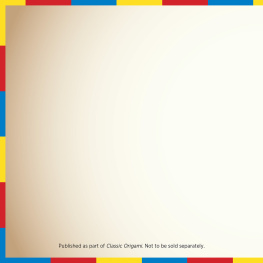
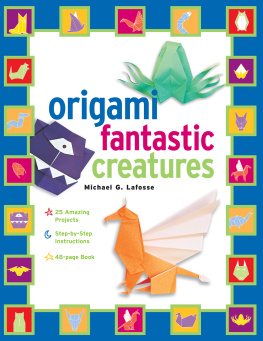
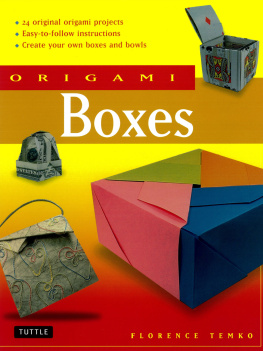

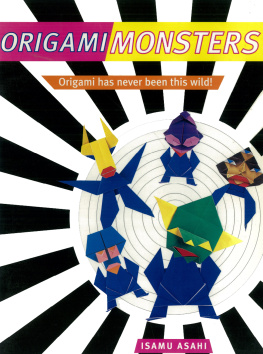
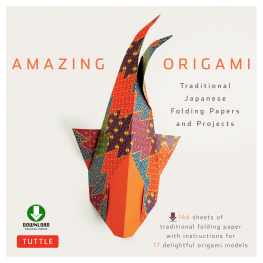
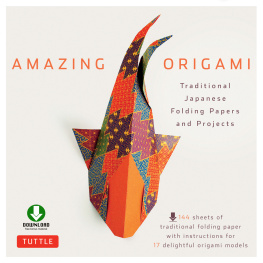
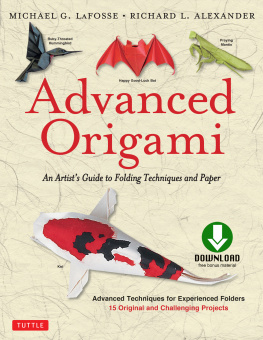
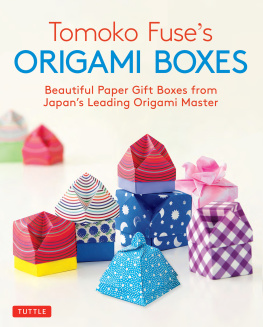
![Marcia Joy Miller - Origami for Busy People: 27 Original On-The-Go Projects [Origami Book, 48 Papers, 27 Projects]](/uploads/posts/book/151502/thumbs/marcia-joy-miller-origami-for-busy-people-27.jpg)


